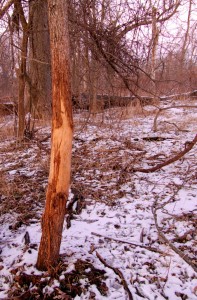The big-buck hunting is just about to get good, really good. To confirm that a shooter buck you’ve been seeing is still in your woods, or to learn that a “new” buck has rolled in and is searching for does, look for 3 things:
Tracks: Ordinary-looking tracks 2 to 2 ½” long tell you little (could be a buck or an adult doe). But a deep, splayed print 2½ to 3 1/2” long screams buck, although the size of his rack is anybody’s guess. Lots of big, fresh tracks in the mud in a small area indicate good buck activity in that area—move in and hunt that spot.
Rubs: The buck that blazed the first big rubs you found back in mid-September might still be around—or he might be 2 miles away. But find a flurry of freshly thrashed trees as thick as your forearm or even your calf now, and you know a big buck is working that ridge or bottom now. Set a stand on that ridge or bottom, along a trail or in a funnel with fresh tracks, and you might see him.
Scrapes: With the rut comes a sudden surge of new rubs and scrapes. Find a ridge or bottom littered with musky, red-hot scrapes, hang a stand and sit in it for a week. You’ll see bucks. Simple old-school advice, but still the best advice.







Was out setting up (and retrieving images from) cameras on Thurs. and Sun. Fresh scrapes and rubs are everywhere. Trail camera images show bucks moving about their areas like clockwork. This weekend could be very good with a bit lower temperatures than current ones. Things appear ready to erupt here. Get in a tree the next several days and be patient, because “prime time” is nearly upon us. The bucks are cruising right now…big time. Decoying is a great tactic at this time…use that “testosterone edge” (disclaimer: term coined by me on 10/27/14. LOL!) against them.